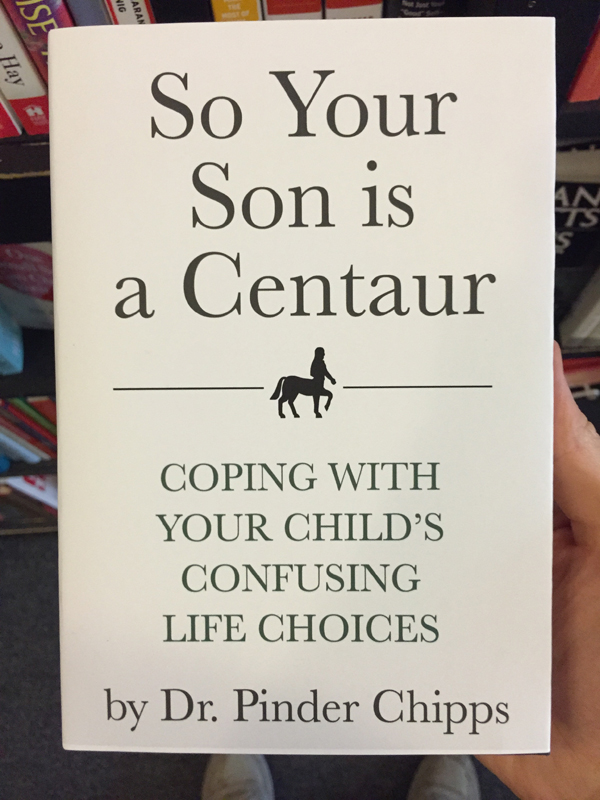Apollo 13, We Have a Solution
Stephen Cass in Spectrum:
“Houston, we’ve had a problem.”
Thirty-five years ago today, these words marked the start of a crisis that nearly killed three astronauts in outer space. In the four days that followed, the world was transfixed as the crew of Apollo 13–Jim Lovell, Fred Haise, and Jack Swigert–fought cold, fatigue, and uncertainty to bring their crippled spacecraft home.
But the crew had an angel on their shoulders–in fact thousands of them–in the form of the flight controllers of NASA’s mission control and supporting engineers scattered across the United States.
A Project to Turn Corpses Into Compost
Catrin Einhorn in The New York Times:
Cullowhee, N.C. — The body of the tiny 78-year-old woman, gray hair falling over stiffened shoulders, was brought to a hillside at Western Carolina University still clad in a blue hospital gown and chartreuse socks.
She was laid on a bed of wood chips, and then more were heaped atop her. If all goes as hoped, the body will turn into compost.
How Memory, Focus and Good Teaching Can Work Together to Help Kids Learn
Katrina Schwartz at KQED:
Everyone has a pet theory on how to improve public education: better professional development for teachers, more money, better curriculum, testing for accountability, teacher incentives, technology, streamlined bureaucracy. Policymakers have been trying these solutions for years with mixed results. But those who study the brain have their own ideas for improving how kids learn: focus on teaching kids how to learn.
“The more you teach students how to learn, the less time you have to spend teaching curriculum because they can [understand] it on their own,” said William Klemm, senior professor of neuroscience at Texas A&M University at the Learning and the Brain conference “Making Lasting Memories.“ “I think the real problem is that students have not learned how to be competent learners,” he said. “They haven’t learned this because we haven’t taught them.”
Feynman: Fire FUN TO IMAGINE
Physicist Richard Feynman talks more about jiggling atoms and heat, and about what fire is
Photographic Notes From Underground
The art director-turned-photographer Nick Frank has spent the last five years traveling the world by subway, spending his Sunday mornings documenting the stations he has seen rather than the cities that hold them.
The Irrationality of Alcoholics Anonymous
Gabrielle Glaser in The Atlantic:
The 12 steps are so deeply ingrained in the United States that many people, including doctors and therapists, believe attending meetings, earning one’s sobriety chips, and never taking another sip of alcohol is the only way to get better. Hospitals, outpatient clinics, and rehab centers use the 12 steps as the basis for treatment. But although few people seem to realize it, there are alternatives, including prescription drugs and therapies that aim to help patients learn to drink in moderation. Unlike Alcoholics Anonymous, these methods are based on modern science and have been proved, in randomized, controlled studies, to work.
Teenagers Face Early Death, on Their Terms
Jan Hoffman in The New York Times:
Until recently, most clinical teams believed that adolescents would not understand the implications of end-of-life planning and that they might be psychologically harmed by such talk.
Sometimes when providers do make the attempt, parents or patients may abruptly change the subject, fearful that by joining in, they are signaling that they have abandoned hope.
Yet research shows that avoiding these talks exacerbates the teenage patient’s fear and sense of isolation. In a 2012 survey examining end-of-life attitudes among adolescent patients with H.I.V., 56 percent said that not being able to discuss their preferences was “a fate worse than death.”
The Radical Humaneness of Norway’s Halden Prison
Jessica Benko in The New York Times:
To anyone familiar with the American correctional system, Halden seems alien. Its modern, cheerful and well-appointed facilities, the relative freedom of movement it offers, its quiet and peaceful atmosphere — these qualities are so out of sync with the forms of imprisonment found in the United States that you could be forgiven for doubting whether Halden is a prison at all. It is, of course, but it is also something more: the physical expression of an entire national philosophy about the relative merits of punishment and forgiveness.
Stanford’s Most Popular Class Isn’t Computer Science–It’s Something Much More Important
Ainsley Harris in Fast Company:
Before Kanyi Maqubela became an investment partner at the Collaborative Fund, an early-stage venture capital firm focused on social enterprises, he was a typical Stanford student in need of career guidance. He was working with startups, studying philosophy, dating someone special—and feeling overwhelmed.
Enter “Designing Your Life,” a new and wildly popular course for Stanford juniors and seniors that is grounded in design thinking concepts and techniques. The course’s lessons gave him the perspective he needed to navigate decisions about life and work post graduation.
“It really helped me understand what the concept of vocation was,” he says. “I had thought of it either as a narrowly religious concept or for a specific job. But it’s this feeling that I have true agency over my work, because I know what I stand for and I have tools to fix the things that I encounter in my life.”
Diets do not work: The thin evidence that losing weight makes you healthier.
Harriet Brown in Slate:
If you’re one of the 45 million Americans who plan to go on a diet this year, I’ve got one word of advice for you: Don’t. You’ll likely lose weight in the short term, but your chance of keeping if off for five years or more is about the same as your chance of surviving metastatic lung cancer: 5 percent. And when you do gain back the weight, everyone will blame you. Including you.
Lee Kuan Yew - Commander of his stage
There was no vainglory in the title of the first volume of Lee Kuan Yew’s memoirs: “The Singapore Story”. Few leaders have so embodied and dominated their countries: Fidel Castro, perhaps, and Kim Il Sung, in their day. But both of those signally failed to match Mr Lee’s achievement in propelling Singapore “From Third World to First” (as the second volume is called). Moreover, he managed it against far worse odds: no space, beyond a crowded little island; no natural resources; and, as an island of polyglot immigrants, not much shared history.
The Scene of the Crime
Seymour M. Hersh in The New Yorker:
By early 1969, most of the members of Charlie Company had completed their tours and returned home. I was then a thirty-two-year-old freelance reporter in Washington, D.C. Determined to understand how young men—boys, really—could have done this, I spent weeks pursuing them. In many cases, they talked openly and, for the most part, honestly with me, describing what they did at My Lai and how they planned to live with the memory of it.
Death, Redesigned
Jon Mooallem in The California Sunday Magazine:
There’s an ugliness — an inelegance — to death that Paul Bennett gradually came to find unacceptable. It seems to offend him the way a clumsy, counterintuitive kitchen tool might, or a frumpy font. At first, that disgruntlement was just “a whisper in my mind,” Bennett explains. “But it’s gone from being a whisper to a roar.” The solution, when it finally occurred to him, felt obvious. “Oh,” he told himself. “You need to redesign death.”
Jennifer Lawrence and Bradley Cooper in a dud: Why Serena went straight to video.
Adam Sternbergh in Slate:
Serena is a bracing reminder of how much expertise goes into making even the most uninspired movie—how dozens of people with wildly different skill sets all have to perform well or the whole project is imperiled. The stars may be the ones with their names plastered over the title, but if you’re Jennifer Lawrence, trapped in Serena like Rapunzel in her tower dungeon, your powers of self-salvation are limited. You can’t reedit the film or rescore its music or rescout its locations. In the end, the lesson of Serena isn’t how remarkable it is when a movie like this goes badly, but how improbable it is that any movie at all turns out to be good.
Why Is This Rogue Needle Exchange Handing Out Meth Pipes?
Brendan Kiley in The Stranger:
As Allan Clear, executive director of the Harm Reduction Coalition in New York City, puts it, “If you want to engage with drug users and build their trust, you have to provide something meaningful to them. A stem or a pipe helps build that relationship… it makes it more likely that they’ll return for advice or medical care if you have provided them with something useful in your first interaction—something you didn’t have to give them.”
The Problem With ‘Fat Talk’
Renee Engeln in The New York Times:
Conversational shaming of the body has become practically a ritual of womanhood (though men also engage in it). In a survey that a colleague and I reported in 2011 in the Psychology of Women Quarterly, we found that more than 90 percent of college women reported engaging in fat talk — despite the fact that only 9 percent were actually overweight. In another survey, which we published in December in the Journal of Health Psychology, we canvassed thousands of women ranging in age from 16 to 70. Contrary to the stereotype of fat talk as a young woman’s practice, we found that fat talk was common across all ages and all body sizes.
How can we build skyscrapers without throwing cities into shadow?
Something I’ve been thinking about for a while. One solution:
There are around 250 tall towers currently planned for London’s skyline. From afar, they’ll probably look great. But unless they’re planned carefully, they’ll start throwing shadows across ever-growing swathes of London.
So one local architecture firm is offering a solution. Using computer modelling, they’ve figured out a design which would reduce the shadows cast by two theoretical towers by as much as 60 per cent.


